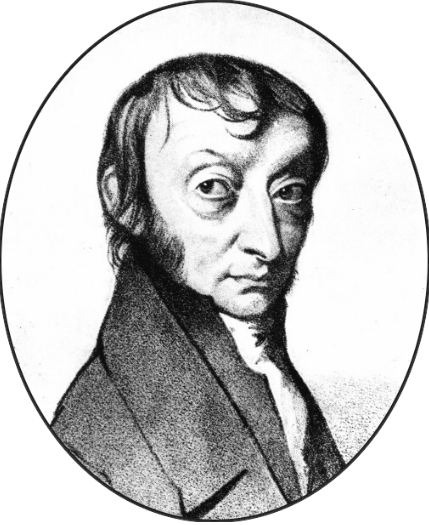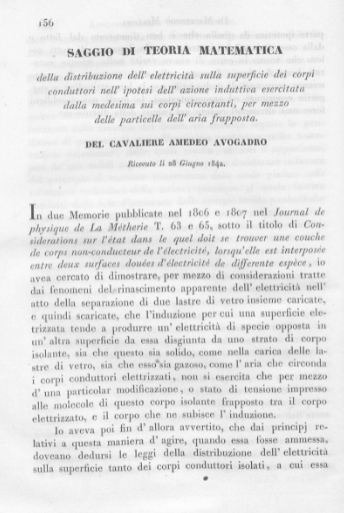Lorenzo Romano Amedeo Carlo Avogadro, Count of Quaregna and Cerreto was an Italian scientist born in 1776. He is mostly known for his contribution to molecular theory, which is now known as Avogadro’s Law. Initially, his theory did not receive any attention but later on, it caught up with the scientists of the 19th and 20th centuries.
Little is known about his personal life but his scientific achievements were perhaps the greatest. Let us see what made Amadeo Avogadro one of the best scientists of the 18th century.
Biography
What we know about Amedeo Avogadro is that he was born in 1776 in Turin to a noble family of the Kingdom of Sardinia. At the age of 20, he graduated in ecclesiastical law ad began practicing. Soon, he found his interest in physics and mathematics and shifted his attention towards the subjects. Then, in 1806, he started teaching them at a high school in Vercelli. This was also the city where his family lived at the time and had some property.
Amedeo Avogadro’s life story began in 1811 when he published an article titled “Essay on a Manner of Determining the Relative Masses of the Elementary Molecules of Bodies and the Proportions by Which They Enter These Combinations”). The article features Avogadro’s hypothesis, which was submitted to Jean-Claude Delametherie’s “Journal of Physics, Chemistry and Natural History”).
The year 1820 saw him becoming a professor at the University of Turin. At the time, Turin had become the restored Savoyard Kingdom of Sardinia under the leadership of Victor Emmanuel I. As a result, he was quite active during the revolutionary movement taking place in 1821. Therefore, he lost his chair in 1823. Although King Charles Albert in 1848 granted a constitution but Avogadro was recalled well before that by the University of Turin in 1833 where he spent another 20 years.
Very little is known about Avogadro’s life. He was a religious and sober person with a wife sharing six children.
Accomplishments
To honor and respect Amedeo Avogadro’s accomplishments along with contributions to molecular theory, the number of molecules per mole of a substance is named the “Avogadro Constant”. The Avogadro constant is used to compute or determine the results of chemical reactions. It allows the scientists to observe the amount of substance a given reaction produces with better accuracy.
Johann Josef Loschmidt was the first individual to determine the value of the Avogadro constant. It stated the number of particles in one mole mostly known as the Loschmidt number. According to the Avogadro law, the relationship between the gases featuring the masses of the same volume corresponds to the relationship between their respective molecular weights. Therefore, a gas’s molecular mass can be calculated from the mass of a sample of known volume.
Joseph Louis-Lussac in 1808 published his law on volumes, which led Avogadro to develop his hypothesis. However, the biggest problem Avogadro encountered at the time was basically confusion related to atoms and molecules. As a result, one of his greatest achievements was to be able to differentiate between the two. He concluded that gases are composed of molecules while molecules are composed of atoms.
Although Avogadro did not use the term “atom” because the terms “atoms” and “molecules” were used interchangeably. In addition to that, he believed that there were three kinds of molecules and paid more attention to defining mass, which was different from weight. He went on to publish three articles in 1815, 1821, and 1841 to help differentiate between molecules and atoms.
Response to the Theory
Avogadro’s theory was not accepted well amongst the scientific communities. Meanwhile, Andre-Marie Ampere proposed a theory, which was similar to Avogadro’s three years later. This was when Avogadro’s theory began gaining pace and attention. The likes of Charles Frederic Gerhardt and Auguste Laurent worked on organic chemistry, which helped demonstrate Avogadro’s Law and why the same quantities of volume in a gas have the same volume.
Unfortunately, some contradictions were seen when related experiments with inorganic substances were conducted. Four years after Avogadro’s death, it was Stanislao Cannizzaro who finally announced that the molecular disassociations were at certain temperatures. In addition to that, he also stated that Avogadro’s Law not only determined the molecular masses but also atomic masses.
Final Word
Amadeo Avogadro is hailed as the father of atomic-molecular theory. Even though his achievements and theory did not receive attention while he was alive but it wasn’t long until they were recognized. Avogadro was one of the few scientists who published his theory with minimum trial and error and came out successful. This meant that not only he was a genius but also a scientist who would be remembered for his everlasting contributions to the field of science.



